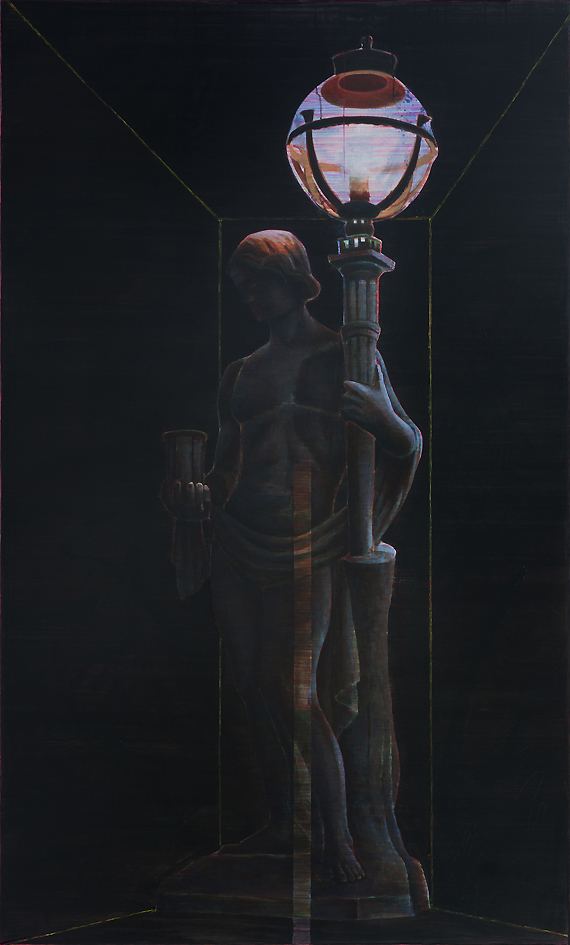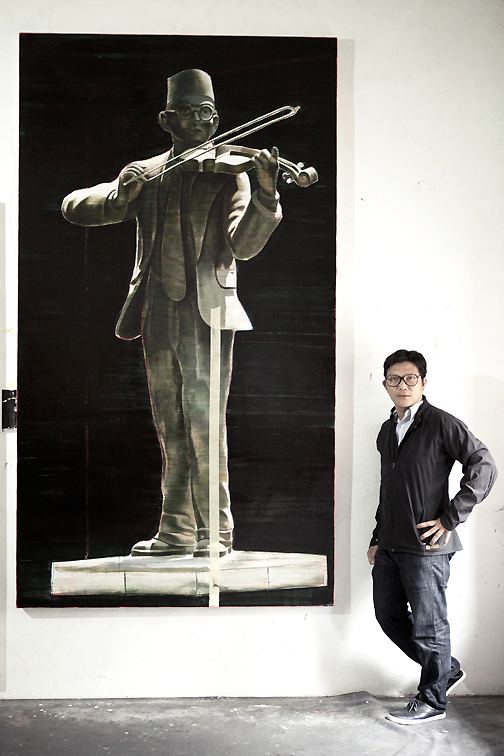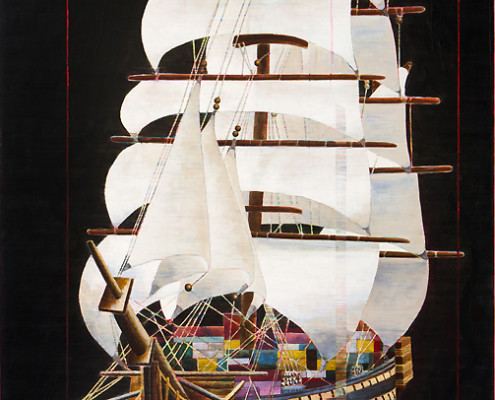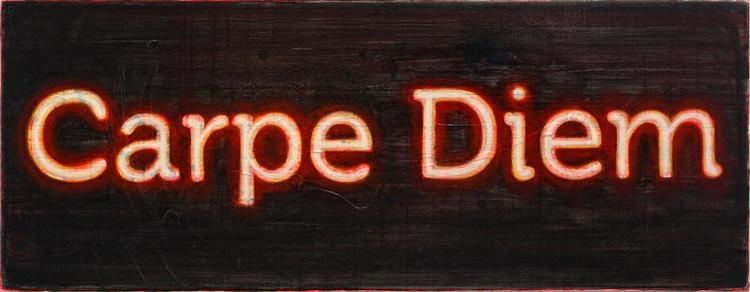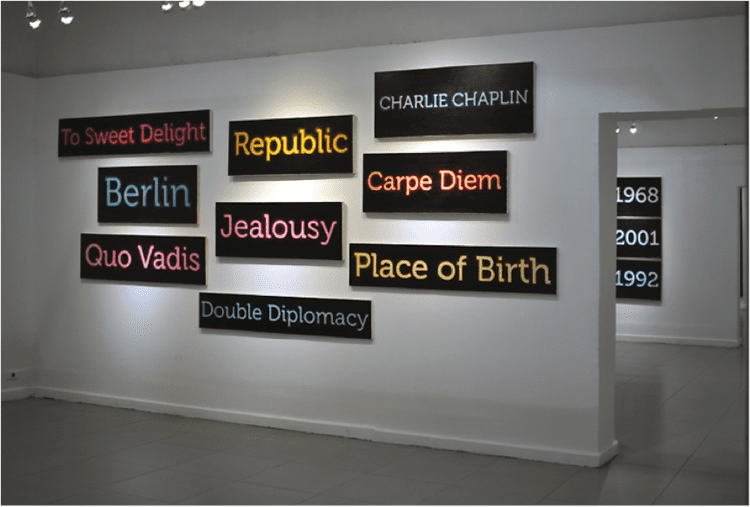Name Fendry Ekel | Books F.E.A.R. | |
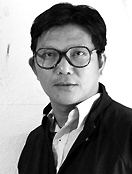 | ||
Video Pameran 1987 'FENDRY EKEL, 12 Pebruari 2016
The painter Fendry Ekel (born 1971, Jakarta) is based in Berlin and Yogyakarta. Ekel's works have been displayed Internationally: the Netherlands, France, Belgium, Spain, Mexico, Italy, Turkey, Czech Republic, Singapore, South Africa, the United Kingdom, Germany, Australia and the United States.
Contents
- Video Pameran 1987 FENDRY EKEL 12 Pebruari 2016
- Folkert de jong fendry ekel at brand new gallery
- Biography
- References

As Benjamin Genocchio writes in his article in the New York Times (22.01.2010), regarding Ekel's solo show 'Witness' at HVCCA New York: Fendry Ekel is a painter with much to say:"[...] Mr. Ekel is primarily a painter, producing colorful works on paper that mix media and techniques, including gouache, acrylic painting and drawing. Each of the paintings being shown here is well crafted and attractively presented [...]..— a loose expressionistic realism — the content gives you pause for thought, and the economical use of symbolic imagery gives the pictures raw visual force. As a starting point for viewing the exhibition, I would encourage visitors to dip into the excellent, informative catalog. It helps explain the social, political and cultural underpinnings of the works. Mr. Ekel has a great deal to say about the world we live in [...]. Take “The Dutchman Willem Oltmans as George Washington” (2008), a cartoonish painting of a middle-aged white man with blond hair dressed up as the first president. It is at a glance an innocuous-looking portrait, reminding you a little of an Andy Warhol screen print. But this work has a political message. Reading about the painting in the exhibition catalog, we learn that Mr. Oltmans, who died in 2004, was a Dutch journalist with political connections to the Sukarno regime in Indonesia. In Mr. Ekel’s eyes, he was a powerful figure who helped change the destiny of a nation."Willem Oltmans” is one of the show’s few portraits. The artist mostly paints late-20th-century buildings and architectural interiors, conveyed with a minimum of detail and information. This makes them seem oddly simple but mysterious. Several paintings here depict the Century 21 department store and the nearby Millennium Hilton hotel in Lower Manhattan. They were done in 2006, based on snapshots. They are impressionistic night scenes, denuded of people, capturing reflections and the play of light. The paintings are linked to the terrorist attack on the World Trade Center, once located across the street from Century 21, for the memory of what happened on 9/11 continues to resonate in the stone and glass of surviving buildings nearby. Mr. Ekel’s blurry, weirdly depopulated night scenes are all about memory and loss.'

Folkert de jong fendry ekel at brand new gallery
Biography

Fendry Ekel migrated in the 80's with his family from Indonesia to Europe. He studied in Amsterdam (1992 - 1997) at Gerrit Rietveld Academie and (1998 - 1999) at Rijksakademie van Beeldende Kunsten where he met painters Narcisse Tordoir, Luc Tuymans and Michelangelo Pistoletto as mentors. In 1999 Fendry Ekel was an Artist in Residence at Cittadellarte, Fondazione Pistoletto in Biella, Italy.
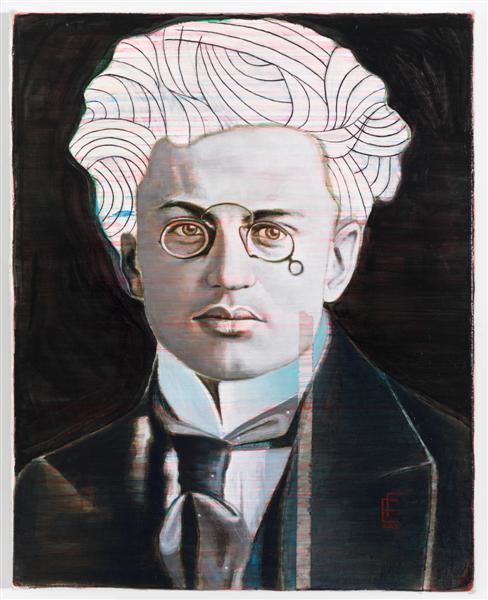
Fendry Ekel's migration as teenager from Indonesia to Europe was a radical move that has given rise to a continuing fascination for investigating his surroundings. Architecture and the urban landscape is a perfect setting where abstraction and figuration meet each other in reality. It is in this setting that Ekel preferably locates the subjects of his paintings. Fendry Ekel's paintings explore the shadow side of human ambition. In his art practice Ekel is intrigued by the power of cliche, producing images intended to create an unguarded moment in seeing when cliches are twisted into an unexpected new awareness and a kind of simultaneous Déjà vu. His large-scale, layered works are often based on black and white photographs depicting portraits, architecture, monuments or other remnants of historic events. By appropriating these images from our collective memory, Ekel critically investigates the use of art, architecture and figuration as propaganda for ideology, confronting himself during the creative process with borderlines where ethical and aesthetic values intersect.
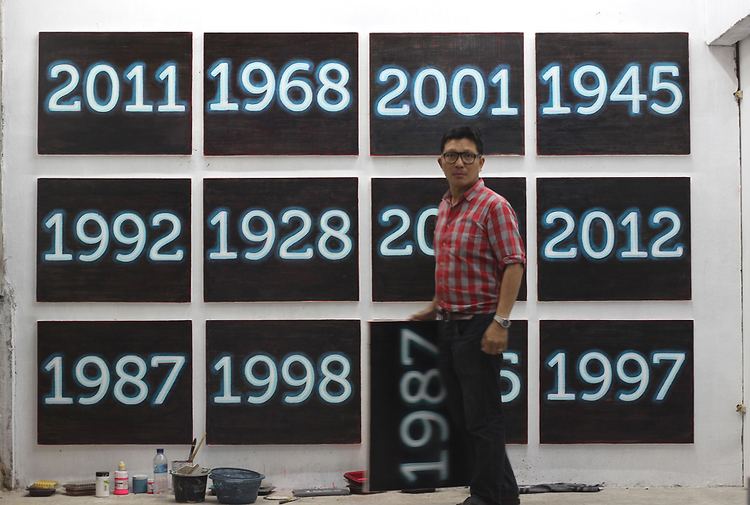
In 2013 Fendry Ekel initiated a series of works entitled 'Investigation' paintings. In this series Ekel unveils layers of forgotten and untold stories, exploring the most elementary motives behind the human desire to create myths of their own time.
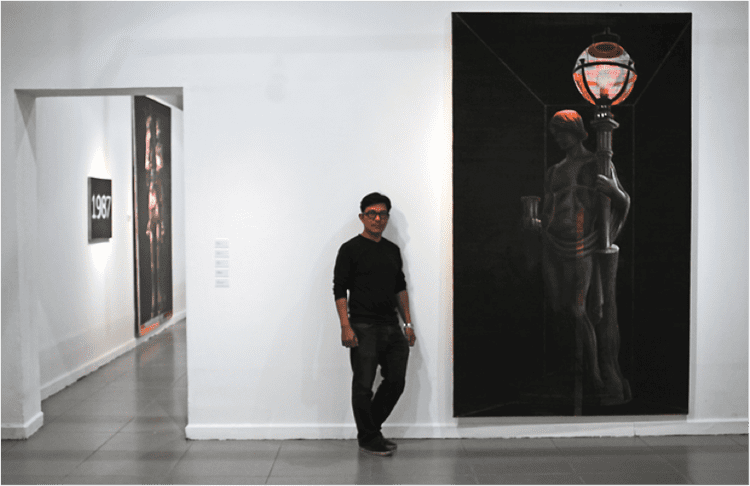
(The Sultans Of Indonesian Art, Flash Art 282, 2012)...Like Ashley Bickerton, who has lately emerged from a self-imposed exile in Bali, Fendry Ekel has in recent years returned to his homeland with a profoundly altered awareness of the role of memory and artifice in history and art. Having lived in the Netherlands since the age of 14 when his family emigrated from Indonesia, Ekel creates artwork and institutional structures that simultaneously craft and consume messages about ego and influence. While his studio practice falls within traditional lines of production, primarily creating well-researched and beautifully executed works on paper, Ekel’s institutional practice as co-founder of artists initiative Office: for Contemporary Art (OFCA) International in Yogyakarta, focuses on developing organizational networks and “structural friendships.” By consciously adopting the conflicted roles of both the romanticized studio painter and art world insider/strategist, he twists clichés and demands we pay close attention to history and inner prejudice. Take for example the lifecycle of his iconic Young Gropius As Soldier (2007), an image that both illuminates and obscures the identity of an historic public figure by complicating the story of Walter Gropius, the director of the highly influential Bauhaus, with unsettling and questionable references to his military history in the German army. Once completed, the artist distanced himself from the creative impetus through strategic efforts as an employee of OFCA International to place the work in the public realm through exhibitions and publications, thereby legitimizing its value and ensuring its consumption. This effort is, in fact, part of the conceptual completion of the work and reflects Ekel’s efforts to “pull the strings” of a system that demands his assimilation/loyalty and yet refuses entrance on grounds of his “otherness.”
